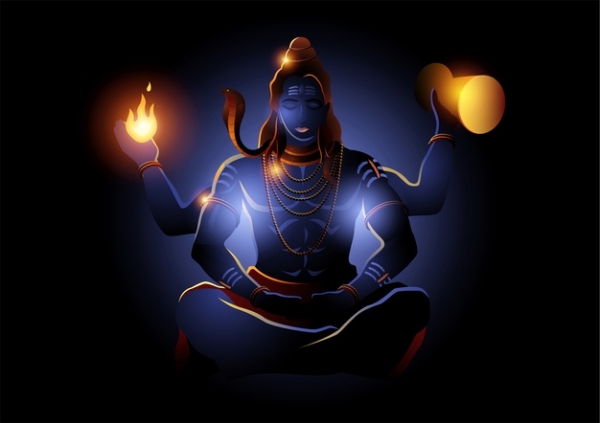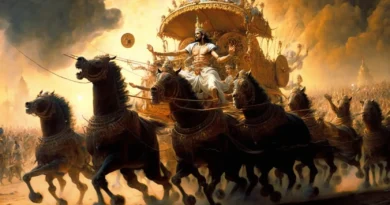Who is Shiva? Is it an Energy? Is it formless? Is it Manifested?
The whole concept of Shiva is sublime. Our ancients had dived into this sublimity and had beautifully divided the divinity of Shiva, the embodiment of this whole Universe. This Tattva or nature of Shiva has been traditionally described as 3 states.
- Arupa (Formless)
- Rupa-Arupa (the formless form or transitional)
- Sarupa (With form)
Formless Shiva
The Arupa state is where there is no form, shape, or color. To describe anything in a form that the mind can visualize, three aspects or dimensions are required: Time, Space, and Matter. The Arupa stage has no form, shape, or color, implying there was no space, time, or matter to describe the Arupa state. Such a state is possible only when this Universe has not yet been created.
The “Nasadiya Sukta” of the Rig Veda has this profound and thought-provoking description of the process of Creation
There was neither Aught nor Naught
Nor air nor sky
What covered all? Where rested all?
A void in wrath
Who knows, from whence this vast creation arose?
No Gods had then been born
Who then can ever disclose the truth?
Whence sprang the world
Whether framed by hand divine or not,
Lord in heaven alone can tell
If even He can show
– Nasadiya Sukta, Rig Veda

The discussion of the Arupa state is of that state before the creation of the Universe. This is beautifully brought out by the Taittiriya Upanishad of Yajura Veda.
यतो वाचो निवर्तन्ते अप्राप्य मनसा सह
Yato Vacho Nivartante Aprapya Manasa Sah
“That form which both speech and thought return without being able to understand or fathom it” means which cannot be described or imagined.
The Arupa state of Shiva is the state of Shiva which is beyond manifestation. In this state the following 6 distortions do not apply:
- Adhi-Anantha, i,e. Beginning and end
- Sanskocha-Vistara, i,e. Contraction and Expansion
- Prasarana-Abhisarana, i,e Spreading and Expansion
All these 6 characteristics are applicable only to the manifested creation. The Arupa state is thus said to denote Shiva as Chaitanya or pure consciousness which does not have any of these 6 attributes or distortions. It is a state of inertness or action, called Akriya or Jadatattva (It exists but still).
Thus Arupa state is a state, which has no quality and does not participate in anything but is fully conscious. Hence the name Nirakara – no shape, Nirupa – no form, Niramaya – unimaginable, Nirguna – no characteristic or quality, and Nirvisesha – non-specific, is attributed to Chaitanya or Shiva. The Arupa state is the source of all creation and all divinities owe their origin to this state. Hence the name Mahadeva, the source of all divinities.
Transitional Shiva
The Rupa-Arupa state is the formless manifesting into a form or form emerging from formless. This is the transitional state of Sukshma to Sthoola or subtle to gross. It is a state where the Universe is getting ready to be created.
न असत् आसीत् नो सत् आसीत् तदानीम्
“Na asat aaseet, no sat aaseet tadaneem”
“Niether Sat nor Asat was existent at that time”
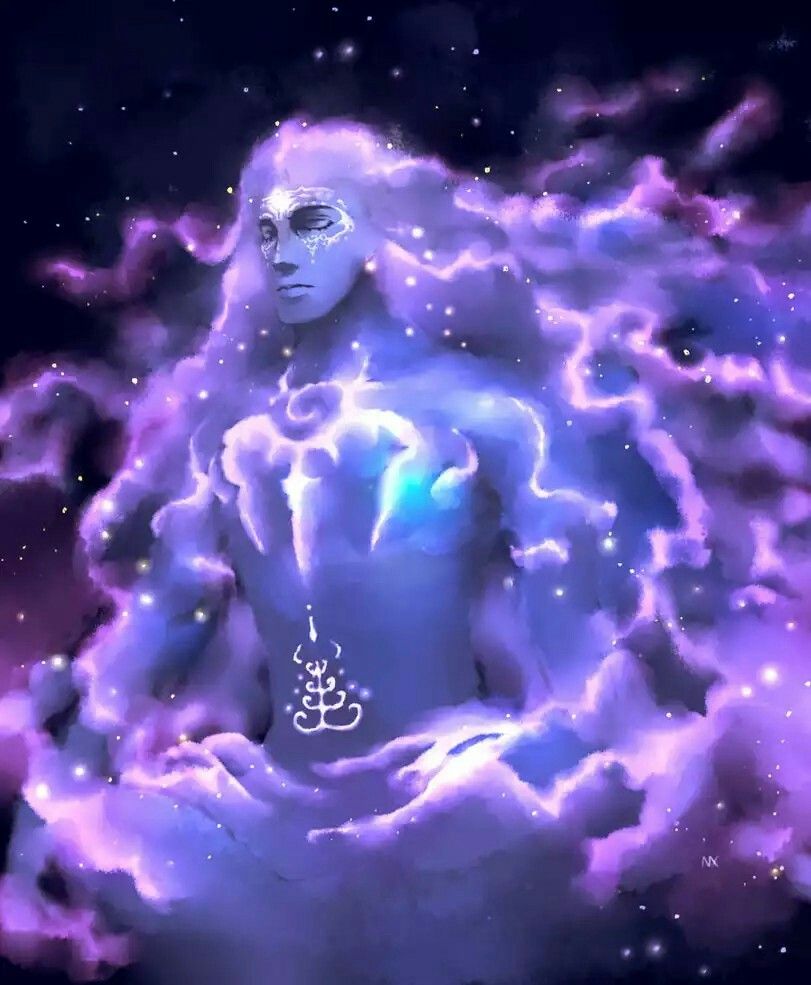
There was no existence nor was there nonexistent. It is also described as “Aprakritha Divya Manusha Rupam”, Aprakritha meaning nonmaterial, and Divya meaning glowing. This state is thus described as a “Nonmaterial Divine effulgence”. There is an ancient city in Bharat called “Kashi”, also popularly known as Varanasi. The deity here is known by the name Kashi Vishwanatha. Kashi means a shining glow, and Vishwanatha means the Lord of the Universe. Vishwanatha is worshipped here in the form of a Bana Linga, a natural stone formation without a well-defined form. Traditionally Kasi and Vishwanatha have been associated with the Rupa-Arupa state of Shiva.
Maha Shmashane means the great cremation ground. Cremation in Hindus denotes the recycling aspect. Ananda Van means forest of Joy, joy here denoting the regeneration. Death is a state of mourning everywhere else in the world. In Kashi alone, death is a state of celebration owing to the understanding that death is but a step in the process of regeneration. A dead body or funeral procession is not considered impure here.
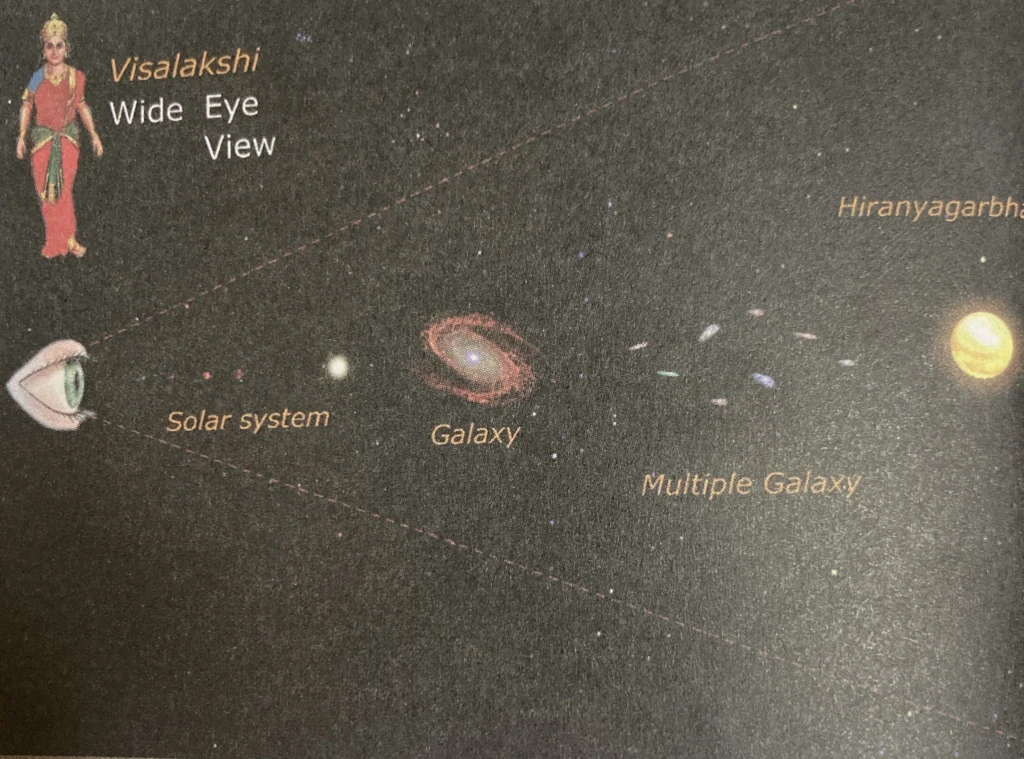
The state of regeneration, the state before creation, is a transitional state. In the transitional state, there is no defined form, but there exists a glow, alluding to a form. The meaning of the name Kashi being glow, points to the association of Kashi with the transitional Rupa-Arupa state. Vishalakshmi is the consort of Vishwanatha in Kashi, Akshi means eyes and Vishalam means wide. It is through Vishalakshmi, that we are bestowed with the broad vision to see and understand the vastness of the Universe as well as see the vast Implication behind Kashi and Kashi’s Vishwanatha who represents the transition from Sukshma to Sthoola during the process of creation.
Manifested Shiva
When Shiva manifests himself in multifarious forms, the ancient texts of Bharat call it the Sarupa state. Sa means with or accompanied by, and Rupa means form. Sarupa is thus a state of being with form while Swarupa is the form of the being. The Sarupa state has 8 manifestations which have been named:
- Bhava – existing
- Sharva – auspicious
- Ishana – controller
- Pashupathi – Lord of all beings
- Rudra – terrific or super
- Ugra – terrifying
- Bheema – strong
- Mahat – all-pervading
These 8 names or Ashta Namavali are further subdivided into Ashta Ashta or 8 x 8 = 64 attributes of Shiva.
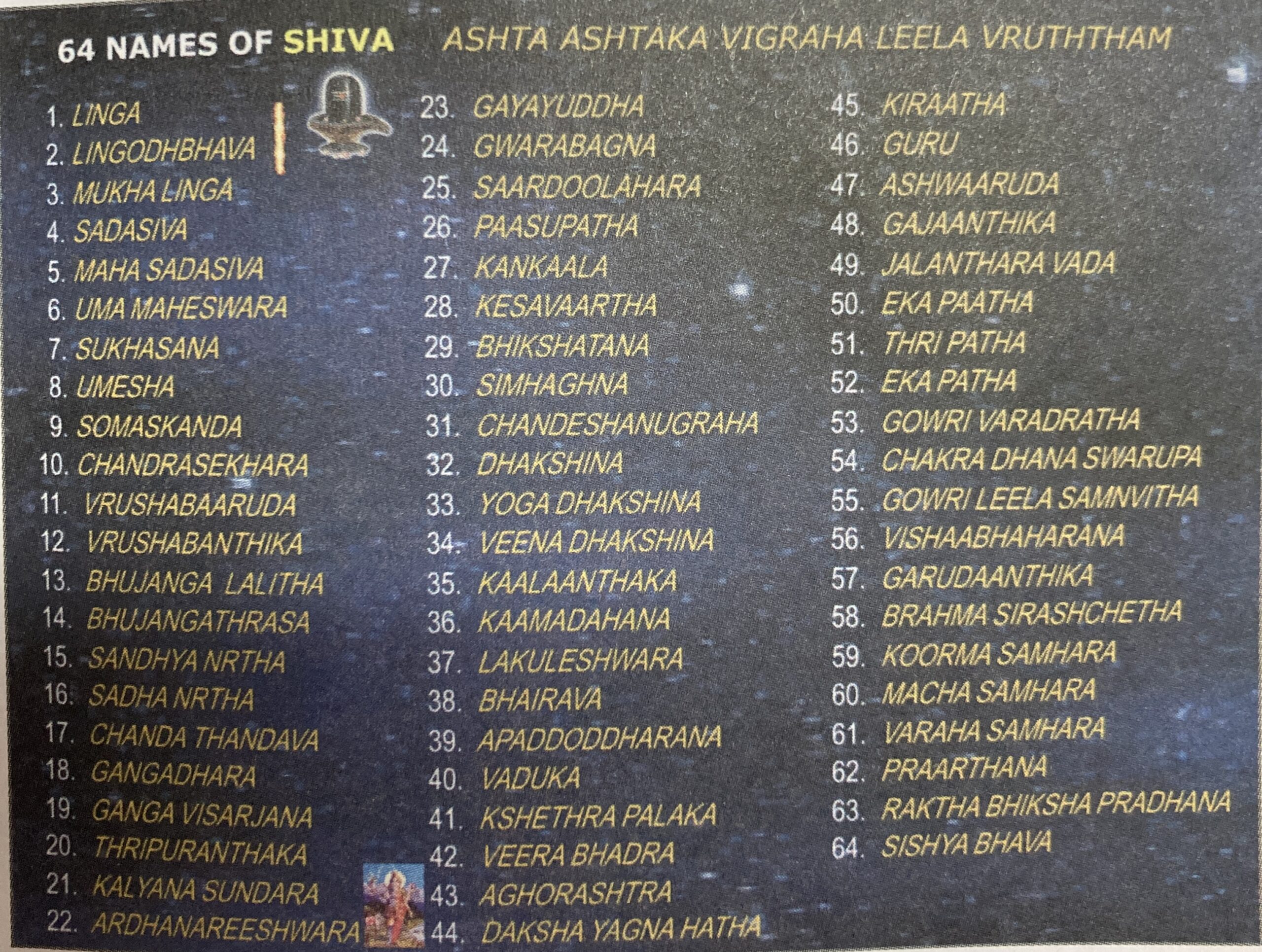
Getting to Know Shiva
One of the seats of knowledge and wisdom in ancient Bharat is Kashmir. The Kashmir Shaiva thought is considered even today to be very advanced. It was called Trika. This aspect of Shiva representing the potential to manifest has also been expressed in the Kashmir Shaiva thought Trika, by Acharya Abhinavagupta in 1000 CE.
Acharya Abhinavagupta, who belonged to the school of thought initiated by Rishi Shvetasvatara many thousands of years ago, describes Shiva as the nature of existence in all beings and calls this nature Prakasha. This shows that the chain of thought all the way from the days of Rishi Shvetasvatara to even 1000 years ago could understand Shvia as the ability to manifest and the nature of existence in all beings.
As per Trika too, Shiva can be understood to be of 3 states and hence the name Trika. To gain the knowledge of Trika, they recommend 4 steps:
- Anavopaya (disciplining the ego)
- Anava (meditation)
- Saktopayai (activating the energy center by centering one’s attention in silence)
- Sambhavopaya (freeing oneself from thought)
Thus we see that Shiva represents the chain from subtle to gross to subtle and the ways to understand Shiva therefore also require subtleness and meditation.
“शिवम् शान्तम् अद्वैतम् चतुर्थम् मन्यान्ते सा आत्मा सा विघ्नेया”
“Shivam Shantham Advaitham Chaturtham Manyante Sa Aatma Sa Vigneyaha”
Meaning, “That state, which is beyond the 3 states of Waking, Dreaming, and Sleeping and which permeates them all, is what is Shvia and is what is worth knowing”. Since this state is beyond our comprehension or does not have a form that is cognizable or can be perceived, it is akin to formless and can also be referred to as Arupa as well and for reference referred to as Turiya or the fourth state. In this state body is restful and the mind is alert like a snake.
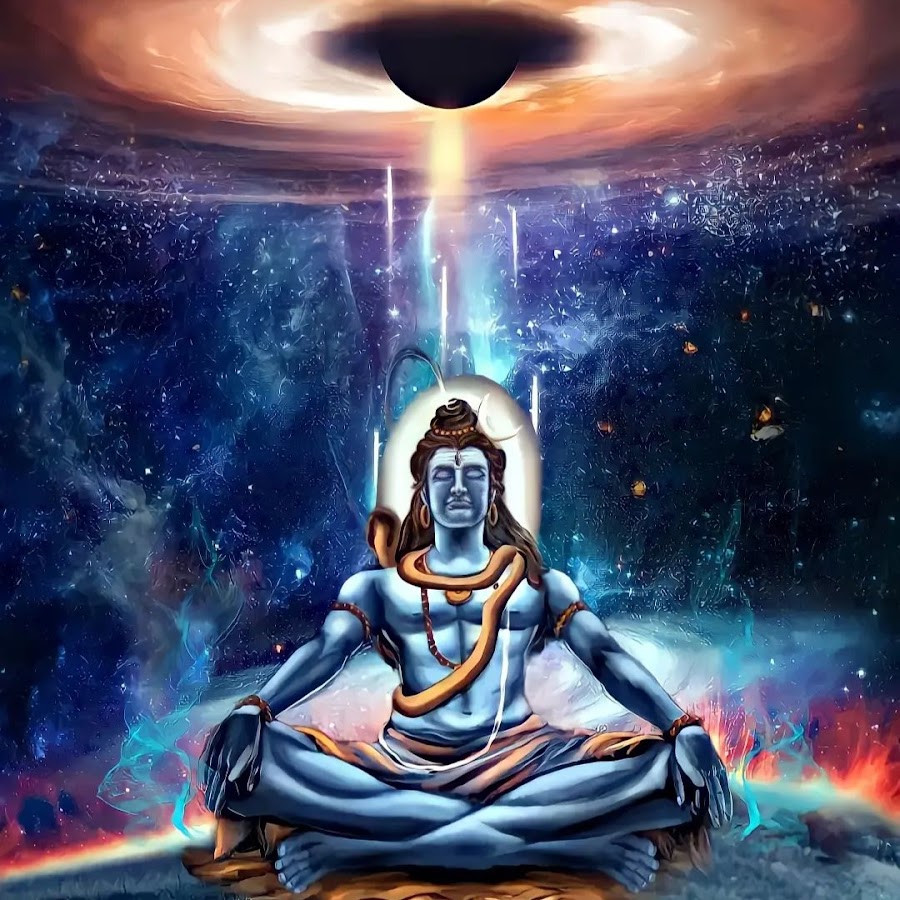
This concept of Shiva as formless and with form, spanning the entire universe, before and beyond, has thus been beautifully brought out through this Shloka from Vignana Bhairava Tantra,
“यत्र यत्र मनो यति भाये वाभ्यांतरेअपि वा, तत्र तत्र शिवावस्थत्,
व्यापकथवाक्वा यश्यति”
“Yatra Yatra mano yati bahye Vabhyantare pi va, Tatra Tatra Shiva vasthath
Vyapakathvakwa yashyati”
“Wherever the mind goes, Shiva is already present. There is not any place,
Where Shiva is not present”
Whenever we go, it is the travel of the body. This body could be a human body, the body of planets like our earth, the body of our sun and other stars, or the body of the different galaxies of the Universe. These are the physical bodies. Shia exists in all these and where all these go. Beyond the physical level, is the level, where only the mind, which is subtle, can go.
This Shiva, exists there too, even before the mind can conceptualize about such places and go there. Thus this auspicious, potential of this Universe, which is here known by the name Shiva, exists within and outside all these bodies mentioned above, in its natural tranquil state. The uniqueness of Bharatiya thought is that divinity does not exist outside alone controlling the Universe through puppet strings, but exists within all bodies in this Universe all the way down to humans and all other living beings and inanimate objects.
